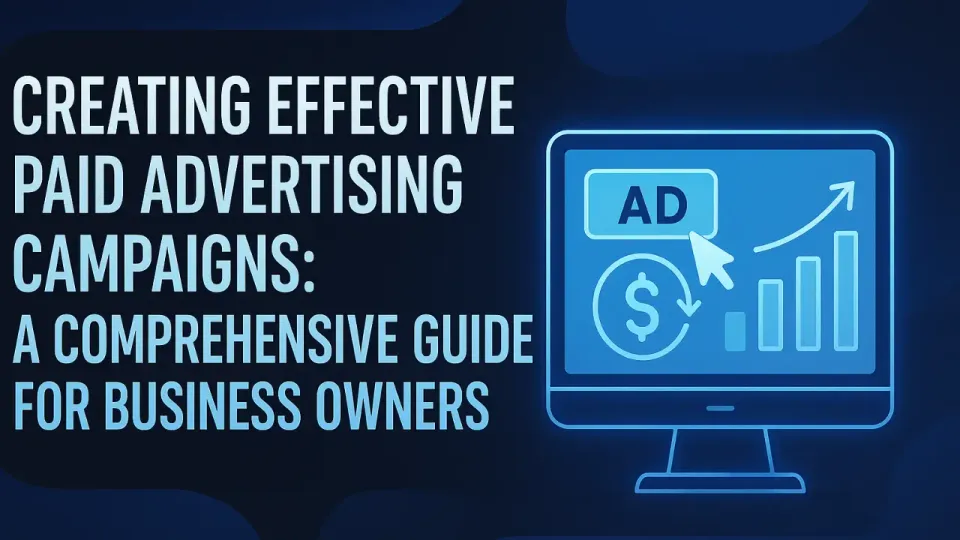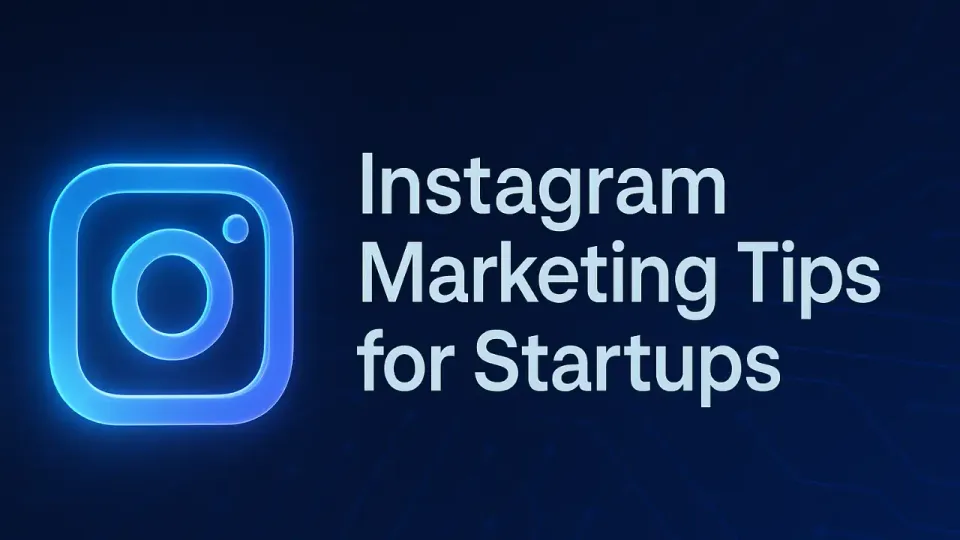Building a Strong Brand Presence on Social Media

In today's digital landscape, social media is more than just a platform for sharing personal updates; it has become a powerful tool for businesses to connect with their audience, build brand loyalty, and drive growth. For small business owners, establishing a strong presence on social media can be a game-changer, opening doors to new opportunities and expanding their reach in ways that were previously unimaginable.

Our Voiceover Process
This article will guide you through the essential steps to build a robust brand presence on social media. From understanding your audience to creating engaging content and leveraging the right platforms, we'll break down each element into actionable strategies that you can implement to boost your online visibility and engage with your customers effectively.
Whether you're just starting or looking to refine your current strategy, this guide is designed to provide you with clear, informative insights that are easy to understand and apply. By the end of this article, you'll have a comprehensive roadmap to enhance your social media efforts and achieve measurable results for your business. Let's dive in and explore how you can harness the power of social media to grow your brand.
Understanding Your Audience
Knowing your audience is the cornerstone of a successful social media strategy. When you understand who your customers are, what they care about, and how they interact online, you can tailor your content and approach to resonate with them more effectively.
Identifying Your Target Audience
To start, you need to identify your target audience. This means figuring out the specific group of people who are most likely to be interested in your products or services. Here are a few methods to help you pinpoint your audience:
- Surveys and Feedback: Ask your current customers for their opinions and preferences. This can provide valuable insights into their needs and how you can meet them.
- Social Media Analytics: Use tools like Facebook Insights, Twitter Analytics, or Instagram Insights to see who is already engaging with your content. These tools can provide data on demographics, interests, and online behaviors.
- Competitor Analysis: Look at your competitors’ social media followers. Who are they engaging with? What content resonates with their audience? This can help you refine your own target audience.
"Joining this community has been a game-changer for staying updated on the latest trends & events!" - John B.
Creating Audience Personas
Once you have gathered enough data, the next step is to create audience personas. These are detailed profiles that represent different segments of your target audience. Each persona should include information like age, gender, interests, online behavior, and pain points. Here’s an example:
- Persona 1: Sarah, a 35-year-old small business owner who is tech-savvy and spends a lot of time on LinkedIn and Facebook. She is looking for ways to improve her business’s online presence and engage with her customers.
Creating these personas helps you to visualize and understand your audience better. It also makes it easier to tailor your content and messaging to meet their specific needs.
Engaging with Your Audience
Understanding your audience goes beyond just knowing who they are; it’s also about engaging with them meaningfully. Here are some tips to foster engagement:
- Listen and Respond: Monitor your social media channels for comments, mentions, and messages. Respond promptly and thoughtfully to show your audience that you value their input and are there to help.
- Create Relevant Content: Share content that addresses your audience’s interests and pain points. This could be in the form of blog posts, how-to videos, infographics, or customer testimonials.
- Ask Questions and Encourage Interaction: Post questions, polls, and interactive content to encourage your audience to engage with your brand. This not only boosts engagement but also provides further insights into their preferences and opinions.
By taking the time to understand your audience, you can create a more targeted and effective social media strategy. This foundational step will set the stage for building a strong, loyal following and driving meaningful engagement with your brand.
Crafting a Consistent Brand Voice
Creating a consistent brand voice is essential for building your brand's identity and fostering trust with your audience. A well-defined brand voice sets you apart from competitors, makes your content recognizable, and ensures that your messaging resonates with your target audience. Think of your brand voice as the distinct personality and style in which your brand communicates with its audience, encompassing the tone, language, and overall attitude conveyed through your content.
To develop your brand voice, start by defining your brand’s core values and mission. What does your brand stand for? What are your goals, and how do you want to be perceived by your audience? Your brand voice should reflect these values consistently. For instance, if your brand values innovation and creativity, your voice might be bold and imaginative. Understanding your audience is equally crucial. Use the audience personas you developed earlier to guide your tone and style. Consider their demographics, preferences, and communication styles. For example, if your target audience is young professionals, your voice might be professional yet approachable, using industry jargon sparingly.
Establishing tone and style guidelines is the next step. These guidelines should cover the tone, language, and personality traits your brand will embody. Decide whether your brand will be formal or informal, serious or playful, authoritative or friendly. The tone can vary slightly depending on the platform but should remain consistent in core characteristics. Choose the type of language you’ll use. Will it be simple and straightforward, or more complex and technical? Avoiding jargon unless necessary ensures clarity and accessibility. Identify the key personality traits you want your brand to embody, such as trustworthiness, innovative, and supportive.
Creating a brand voice chart is a useful tool for maintaining consistency across all your social media platforms. This chart outlines how your brand should sound in various contexts, including examples of do's and don'ts. For instance, a trustworthy brand might share customer success stories and use clear language while avoiding exaggerated claims and misleading information. An innovative brand could highlight new technologies and share industry insights without sticking to outdated methods or avoiding new trends. A supportive brand would provide helpful tips and respond to inquiries quickly, rather than ignoring customer feedback or using a dismissive tone.
Consistency in brand voice is crucial, especially when managing multiple social media platforms. Each platform has its own nuances and audience expectations, but your core voice should remain the same. Tailor your content to the platform while keeping your voice consistent. For instance, LinkedIn content might be more professional and detailed, whereas Twitter posts can be concise and engaging. Use a content calendar to plan and organize your posts, ensuring that your messaging stays consistent over time. This not only helps maintain your brand voice but also allows you to strategically schedule content to maximize engagement.
By taking the time to develop and maintain a consistent brand voice, you can create a strong, recognizable identity that resonates with your audience. This foundational step will set the stage for building trust, fostering loyalty, and driving meaningful engagement with your brand on social media.

Creating Engaging Content
Creating engaging content is at the heart of building a strong brand presence on social media. High-quality, relevant content captures your audience’s attention, encourages interaction, and drives them to take action. To achieve this, you need to understand what types of content resonate with your audience, create a variety of content formats, and consistently deliver value through your posts.
The first step in creating engaging content is to understand what interests your audience. Look at your audience personas and consider their preferences, pain points, and motivations. What kind of content do they find useful or entertaining? Analyzing your social media analytics can provide insights into which posts have performed well in the past. This data helps you identify patterns and refine your content strategy.
Once you understand your audience, it’s time to diversify your content formats. Different types of content can engage your audience in various ways. Blog posts and articles are great for providing in-depth information and establishing your authority in your industry. Videos, on the other hand, are highly engaging and can convey your message quickly and effectively. Live videos and stories create a sense of immediacy and allow for real-time interaction with your audience. Infographics are excellent for presenting data in a visually appealing way, making complex information easy to digest. User-generated content, such as customer testimonials and reviews, can build trust and show appreciation for your customers.
Quality should always be a priority when creating content. Ensure your posts are well-researched, accurate, and professionally presented. High-quality visuals, including images and videos, are essential for capturing attention on social media. Investing in good design and production can make a significant difference in how your content is perceived. Additionally, your content should be aligned with your brand voice, maintaining consistency in tone, style, and messaging across all posts.
To keep your audience engaged, your content must provide value. This means offering information, entertainment, or solutions that address your audience’s needs and interests. Educational content, such as how-to guides, tutorials, and tips, can position your brand as a helpful resource. Entertaining content, like memes, quizzes, and behind-the-scenes videos, can humanize your brand and foster a connection with your audience. Inspirational content, including success stories and motivational quotes, can inspire your audience and encourage them to engage with your brand.
Another key aspect of creating engaging content is storytelling. People are naturally drawn to stories, so incorporating storytelling elements into your content can make it more compelling. Share your brand’s journey, highlight customer success stories, or showcase the people behind your brand. Stories create an emotional connection with your audience and make your content more memorable.
Consistency is crucial for maintaining engagement on social media. Posting regularly keeps your audience interested and aware of your brand. Use a content calendar to plan your posts in advance, ensuring a steady flow of content. This also allows you to strategically schedule your posts for optimal times, increasing visibility and engagement. Consistency in posting doesn’t mean you have to be on every platform every day, but having a regular schedule helps in keeping your audience engaged and looking forward to your content.
Interactivity is another powerful way to engage your audience. Encourage your followers to participate in polls, contests, and Q&A sessions. Asking questions and prompting discussions in the comments section can also boost engagement. Responding to comments and messages shows that you value your audience’s input and are committed to building a community.
Lastly, leveraging analytics and feedback is essential for refining your content strategy. Monitor the performance of your posts to see what works and what doesn’t. Use this data to adjust your approach and continually improve the quality and relevance of your content. Listening to feedback from your audience can also provide valuable insights into their preferences and help you create content that better meets their needs.
By focusing on creating high-quality, diverse, and valuable content, you can significantly enhance your brand’s presence on social media. Engaging content not only attracts and retains followers but also fosters a loyal community that supports your brand’s growth and success.
Leveraging Social Media Platforms
Maximizing your brand presence on social media involves understanding the unique features and audience expectations of each platform. By strategically leveraging different social media channels, you can reach a broader audience and optimize your engagement efforts. Here’s how to choose the right platforms and make the most of each one.
Choosing the Right Platforms
Not all social media platforms are created equal, and not all will be suitable for your brand. Start by identifying where your target audience spends their time. Research the demographics and user behavior of different platforms to find the best fit for your brand. Here’s a brief overview of some popular platforms and their key characteristics:
- Facebook: With a broad user base, Facebook is great for reaching a diverse audience. It’s ideal for sharing a mix of content types, including articles, videos, and photos. The platform’s advertising capabilities also allow for highly targeted campaigns.
- Instagram: Known for its visual content, Instagram is perfect for brands with strong visual elements. High-quality images, short videos, and Stories are key to success here. Instagram’s younger demographic makes it a good choice for brands targeting millennials and Gen Z.
- Twitter: This platform is best for real-time engagement and quick updates. Twitter’s concise format is ideal for sharing news, updates, and engaging in conversations. It’s also a great platform for customer service and building relationships with your audience.
- LinkedIn: As a professional networking site, LinkedIn is excellent for B2B brands and thought leadership. Sharing industry insights, company news, and professional achievements can help you build a strong professional presence.
- Pinterest: This platform is highly visual and works well for brands in the lifestyle, fashion, food, and DIY niches. Pinterest users often search for inspiration, so content like infographics, tutorials, and product showcases perform well.
- TikTok: With its rapidly growing user base, TikTok is known for short, creative videos. It’s particularly popular among younger audiences and can be a powerful tool for brands willing to experiment with creative and viral content.
Optimizing Your Presence on Each Platform
Once you’ve selected the right platforms, it’s important to optimize your presence on each one. Here are some tips for making the most of each platform:
- Facebook
- Post Frequency: Aim for 1-2 posts per day to keep your audience engaged without overwhelming them.
- Content Types: Share a mix of articles, videos, and images. Live videos and Stories can also boost engagement.
- Engagement: Respond to comments and messages promptly. Use Facebook Groups to create a community around your brand.
- Instagram
- Visual Quality: Invest in high-quality images and videos. Use filters and editing tools to maintain a cohesive look.
- Stories and Reels: Use Stories for behind-the-scenes content and Reels for short, engaging videos.
- Hashtags: Use relevant hashtags to increase your reach. Mix popular and niche hashtags for the best results.
- Twitter
- Tweet Frequency: Posting 3-5 times a day is effective for staying visible in the fast-paced Twitter feed.
- Content: Share a mix of original content, retweets, and replies. Use Twitter polls and questions to engage your audience.
- Hashtags: Use 1-2 relevant hashtags per tweet to join conversations and increase visibility.
- LinkedIn
- Professional Tone: Maintain a professional and authoritative tone in your posts.
- Content: Share industry insights, company news, and thought leadership articles. Encourage employees to share your posts to increase reach.
- Engagement: Participate in LinkedIn Groups and comment on industry discussions to build your network.
- Pinterest
- Visual Appeal: Create visually appealing pins with high-quality images and informative descriptions.
- Boards: Organize your content into themed boards. Use keywords in your board names and descriptions for SEO.
- Pin Frequency: Aim for at least 10 pins per day, including repins of relevant content from other users.
- TikTok
- Creativity: Focus on creating fun, engaging, and creative videos. Use trending sounds and challenges to increase visibility.
- Short and Sweet: Keep your videos short and to the point. TikTok users prefer quick, snappy content.
- Engagement: Respond to comments and collaborate with influencers to reach a wider audience.
Measuring Success and Adjusting Strategies
To ensure your social media efforts are effective, regularly measure your performance using analytics tools available on each platform. Track key metrics such as engagement rates, follower growth, and website traffic generated from social media. Use this data to assess what’s working and what’s not.
Based on your findings, adjust your strategies to optimize results. For example, if you notice that video content performs better than images on Instagram, focus more on creating videos. If your Twitter engagement is low, experiment with different posting times or content types to see what resonates with your audience.
Conclusion
Leveraging social media platforms effectively requires a strategic approach tailored to the unique features and audience of each platform. By choosing the right platforms, optimizing your presence, and regularly measuring your performance, you can build a strong, engaging social media presence that drives business growth and strengthens your brand’s identity.
Summary
Building a strong brand presence on social media is essential for any business looking to connect with its audience, enhance its reputation, and drive growth. In this guide, we’ve explored the key components necessary for creating a successful social media strategy tailored to small business owners.
We began by discussing the importance of understanding your audience. By identifying your target market and creating detailed audience personas, you can tailor your content and engagement strategies to meet their needs and preferences. Engaging with your audience on a personal level builds trust and fosters long-term loyalty.
Next, we delved into crafting a consistent brand voice. A well-defined brand voice reflects your core values and resonates with your audience, setting you apart from competitors. Establishing tone and style guidelines ensures your messaging remains clear, professional, and aligned with your brand’s personality across all platforms.
Creating engaging content is the heart of your social media efforts. By diversifying content formats and consistently delivering value, you can capture your audience’s attention and encourage interaction. High-quality visuals, educational posts, and storytelling are all effective ways to keep your audience engaged and invested in your brand.
Finally, leveraging social media platforms strategically allows you to maximize your reach and impact. Each platform has unique features and audience expectations, so tailoring your approach to fit each one is crucial. Regularly measuring your performance and adjusting your strategies based on analytics ensures continuous improvement and success.
By implementing these strategies, you can build a robust social media presence that not only increases brand awareness but also drives meaningful engagement and business growth. Remember, the key to success on social media lies in understanding your audience, maintaining a consistent brand voice, creating valuable content, and leveraging the strengths of each platform effectively.
"Joining this community has been a game-changer for staying updated on the latest trends & events!" - John B.





